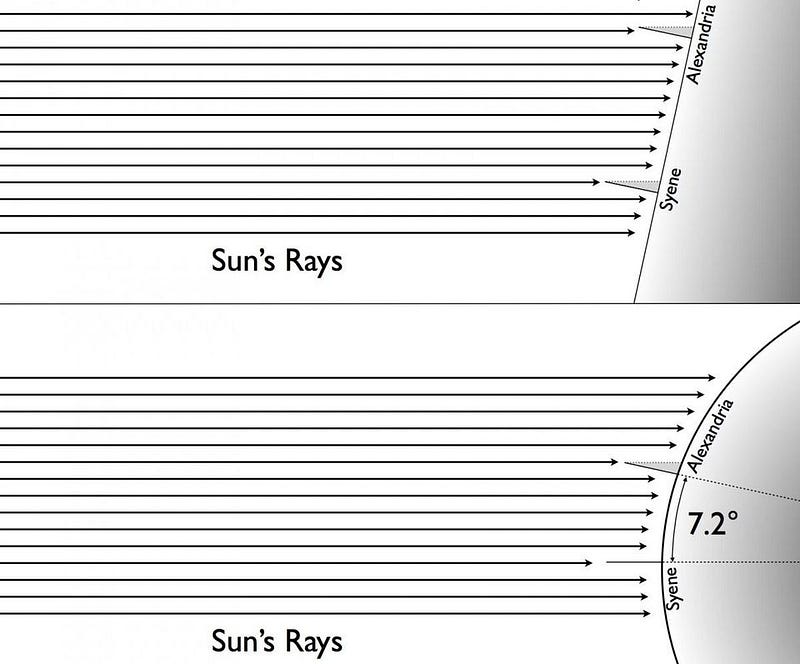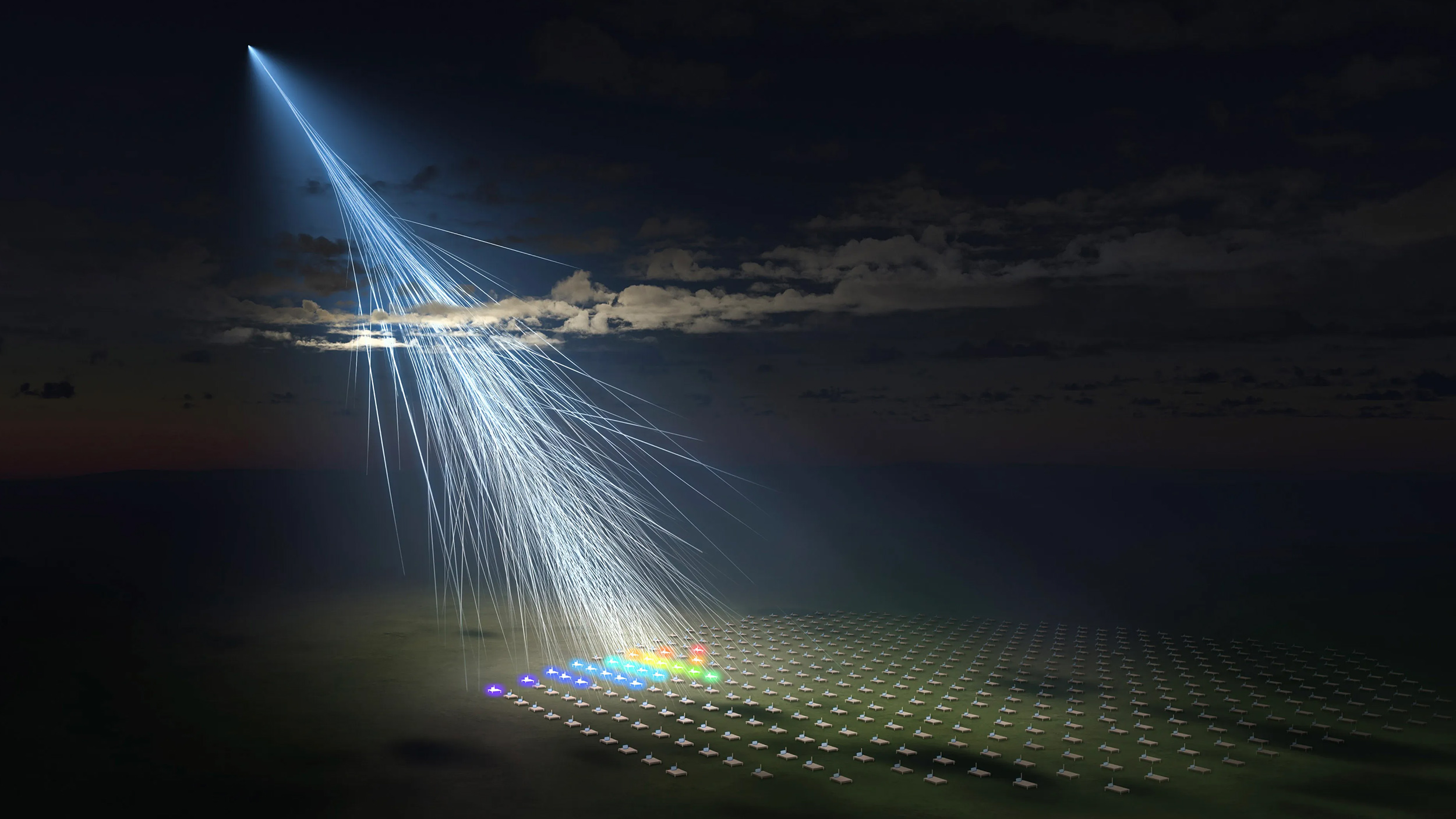Ask Ethan: Why Aren’t Rays Of Sunshine Parallel?

If the Sun is 93 million miles away, why does sunlight filtering through the clouds or the trees spread out?
Rays of sunshine are one of those natural sights that leave indelible marks on our minds and memories. Whether it’s sunlight filtering through a cloud or poking through the trees in a forest, the rays almost never appear perfectly parallel. Instead, they appear to converge at some far-off point, appearing to diverge away from one another as they approach Earth’s surface. But the Sun is so much farther away, at distances of 93 million miles (150 million km), that the light rays ought to appear perfectly parallel. So why don’t they, then? That’s what ‘Perplexed in Iowa’ wants to know, asking:
I understand the sun is a really long distance from the earth, such that the paths photons take that strike the earth are pretty much in parallel. So why, when I see “rays of sunshine”, produced (I assume) by the sun shining through differing cloud densities, are they radial with their point of origin being at the apparent location of the sun in our sky?
I liked this question immediately, because it takes an everyday phenomenon that almost everyone has experienced, and asks the simplest of all questions: why?

Sunbeams themselves — or “rays of sunshine” as you might think of them — aren’t always visible. If you think about a typical, sunny day, the entire sky appears to be illuminated. Without anything to block the Sun’s rays, they strike the Earth as though they were completely parallel. The Sun is both large and distant compared to the diameter of the Earth: it’s 864,000 miles across and 93 million miles away. Wherever you are on Earth, you’re likely to see all the rays from the Sun, just half-a-degree in diameter as seen from Earth, originating from the same location in space. The light from the Sun, at least as far as human eyes go, comes from a single direction.

You don’t need direct sunlight to see everything, though. The Earth’s atmosphere is mostly clear enough that all the sunlight either travels straight down to the Earth’s surface or gets scattered omnidirectionally. This latter effect is why, on a cloudy, overcast day, you can still see things; the entire world is still lit up, even if you cannot see the Sun. The atmosphere does a great job of dispersing the Sun’s light to fill up the surrounding environment with luminance. The light, once scattered by the atmosphere, goes off in all directions equally. What we experience on Earth is a combination of that scattered light as well as the direct light coming from celestial sources, like the Sun.

This is also why, on a bright, sunny day, if you look at your shadow, the shadowed region might be darker than the others, but it’s still illuminated. If you look at your own shadow during the day, you can still view everything on the ground, whether it’s in your shadow or not. Similarly, if the Sun dips behind a cloud, you can still see everything in the location where clouds block the sunlight. Only a little more than half of the light striking you, on a sunny day, comes from direct sunlight; the remainder comes from light that’s being either reflected or re-radiated from elsewhere on Earth. No matter whether you’re in sunshine or shadow, the world, during the day, is still illuminated by scattered light.

So with all this in mind, let’s come back to the sunbeam phenomenon. Why, when you have the Sun behind the clouds, can you sometimes see sunbeams shining across the land? Is it really because of different cloud densities, or are there genuine holes in the clouds? Furthermore, why do rays of sunshine sometimes appear to be parallel to one another, while, at other times, they look like they converge back towards the Sun?

The first thing you have to accept is that even in the absence of direct sunlight altogether, there’s still going to be that indirect, scattered sunlight coming at you from all directions. For those of you who’ve experienced a total solar eclipse, you might have been surprised that even though it got darker, it didn’t look like it was nighttime. The world still displayed its colors; you could still see for miles in all directions; you could see details in the people next to you and all throughout the landscape and sky. The scattered sunlight is always there during the day, and very difficult to avoid.

Any direct sunlight coming towards you (or near you) has to emerge on top of the scattered sunlight that permeates the rest of your environment. The direct sunlight is brighter and more powerful than the scattered sunlight, and so it stands out against the background whenever an otherwise clouds or obscured-light view makes up most of your field-of-vision. Sunbeams originate from either gaps or very thin parts of the clouds (or trees, or whatever else is opaque), where the direct sunlight isn’t effectively blocked. This direct light appears brighter than every place around it, but it only makes a visual impression on us when it’s beaming in relief against a shadowy backdrop.

A sunbeam’s apparent shape can vary dramatically depending on your orientation relative to the Sun and the clouds/trees that create the visual scene you’re observing. You might suspect that clouds are like prisms or lenses, diverging or refracting the light beams and causing them to spread out. But that’s not actually the case; the clouds themselves absorb and re-emit the light pretty evenly in all directions, which is why they’re not transparent.
It’s only where the clouds don’t absorb most-or-all of the light that you get the sunbeam effect. As it turns out, these rays actually are, to the best we can measure, truly parallel lines, consistent with the Sun being extremely far away. If you found some rays of sunlight that were directed neither towards you nor away from you, but perpendicular to your line-of-sight, you’d observe completely parallel sunbeams.

Most sunbeams appear to converge towards the Sun only when the Sun is visible in the region of sky that you’re looking towards. Sunbeams appear to converge on the Sun’s location for the same reason that roads or railroad tracks appear to converge towards a vanishing point: these are truly parallel lines that are seen from one particular perspective. Because these parallel rays happen to be closer to where you’re located at the near end (rather than the far end), they always appear to converge in the distance and diverge as they approach you.
The reason for this is simple: the Sun is very far away, and the sunbeam’s point of origin (from the clouds or trees) is farther away from you than the sunbeam’s landing point.

It might not always be obvious, but that’s why the rays take on the beam-like shape that’s so familiar. In fact, the diverging shape of the beams becomes extremely pronounced the closer to you the end of the beam actually is.
The reason you have a beam at all is because of the perspective of the surrounding shadows, and our eyes’ ability to pick out the relative brightness of direct sunlight against a surrounding backdrop of relative darkness. The reason the rays appear to have a diverging shape is because of perspective, and the fact that these truly parallel rays of light are land closer to us than their point-of-origin, way back at the bottoms of the clouds. The Sun’s rays really are parallel, but unless they’re coming in perpendicular to you, they won’t appear to be so. That’s simply what it looks like when you view parallel lines as they recede away from you.
Send in your Ask Ethan questions to startswithabang at gmail dot com!
Ethan Siegel is the author of Beyond the Galaxy and Treknology. You can pre-order his third book, currently in development: the Encyclopaedia Cosmologica.




